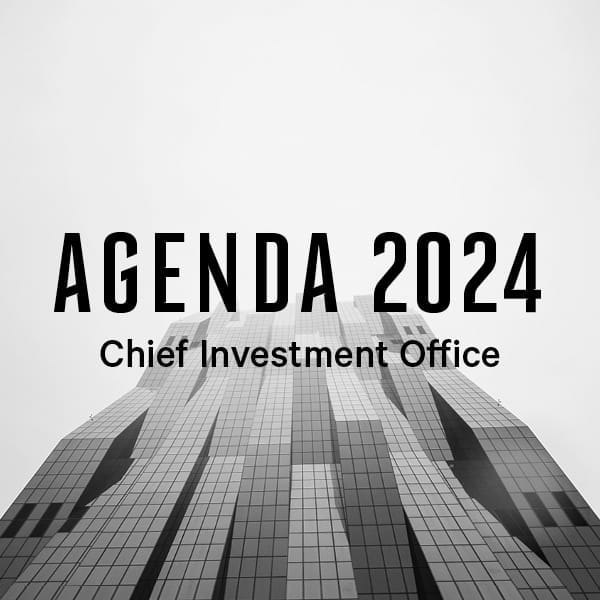-
About China
The investment case for China has become more challenging over the past few months. We can point to three reasons for this. First, having led the world into COVID and policy stimulus, China is now leading the world out into re-opening and stimulus withdrawal. Second, regulatory risk is rising. Third, geopolitical risk remains elevated with evidence of China asserting itself not only within the region but with its major trading partners.
-
Stimulus withdrawal

China was the first into the covid crisis, the first to inject stimulus, the first to exit lockdowns and the first to withdraw stimulus. In a sense, China can be viewed as a leading indicator for what is to come in other markets and regions.
As China is well ahead of any other major economies in recovering from the COVID-induced recession, policymakers are increasingly pivoting from supporting growth to reining in excessive debt.
The fundamental backdrop is that the People’s Bank of China (PBOC) remains committed to gradually tightening liquidity and addressing some of the most risky aspects of its financial system. Even as the situation around China Huarong stabilizes (this was the company set up by the Chinese government to help clean up toxic debt in the banking system only to get into trouble itself), that saga has only served to reinforce that underlying message.
This will continue to weigh on a stock market that is expensive compared to its own long-term averages. The forward price-earnings ratio for Chinese equities is at 13.7 vs a 10-year average of 12.4 times earnings.
The PBOC is gently tapping on the brakes, removing some of its stimulus measures (Chart 1). That threatens to put a dampener on the economy, and therefore on earnings expectations for equities. We are starting to see this in equity analysts’ expectations. After boosting earnings forecasts aggressively during the second half of 2020, analysts have lowered their 12-month forward estimates for MSCI China Index members by about 1% so far this year. Meanwhile, the rest of Asia continues to be revised higher.
Chart 1: China policy stimulus is easing: Credit as % Chinese GDP

Source: Bloomberg
-
Regulation rising

One of our emerging market equities investment partners quite aptly notes that nothing changes a market more than government regulation.
The Chinese Communist Party has stamped its authority on the technology sector over the last few months. Most recently, it imposed a record $2.8 billion fine on Alibaba Group for abusing its market dominance, then ordered an overhaul of Ant Group. Over the following few days, regulators requested an audience with 34 of the country’s largest technology companies from Tencent (operator of the WeChat app) to TikTok owner ByteDance warning them “the red line of laws cannot be touched.”
Even those who haven’t been targeted to the same extent are expected to tone down their expansion strategies and adapt their business to the new bridled environment.
Regulators grew concerned as the likes of Alibaba and Tencent aggressively safeguarded and extended their moats, using data to squeeze out rivals or forcing merchants and content publishers into exclusive arrangements. Their growing influence over every aspect of Chinese life became more apparent as they became the conduits through which many of the country’s 1.3 billion population bought and paid for things – handing over vast amounts of data in the process (Chart 2).
The burst of scrutiny is shaping up to become one of the largest concerted actions against private enterprise in decades. President Xi has declared he will go after “platform” companies that amass data and market power – a sweeping definition that includes just about all of China’s largest technology companies.
The term platform company applies to the large mobile and internet companies that offer services to hundreds of millions of people, from ride-hailing to food delivery to e-commerce.
Chart 2: Chinese internet users (millions)

Source: Bloomberg
The clampdown by Chinese authorities on technology companies is leading many analysts to suggest the glory days for China’s technology giants are over. We don’t believe the situation is quite that dire but it does mean the landscape is changing and with change comes uncertainty.
Of course, with change also comes opportunity. Some of our investment partners view the changes taking place inside China as an opportunity to invest in companies that have for the most part been locked out of the market by the tech giants. The authorities highlighted, for example, Alibaba’s practice of banning third-party merchants on its platforms if they are found to have stores on rival online marketplaces like JD.com and Pinduoduo as representing a “disorderly expansion of capital”.
For now, the regulatory risk presents a headwind to the likes of Alibaba who will now have to reduce the fees it charges sellers on its e-commerce platforms. We are also conscious, however, that China has a tradition of clamping down in fits and starts or making examples out of high-profile companies. Tencent, for instance, became a target of a campaign to combat gaming addiction among children in 2018.
-
Geopolitical risk is elevated

When reviewing the quarterly performance of our emerging markets managers last week we discovered one of the key stock picks that was a significant contributor to performance was also one that was placed on the US sanctions list on the 1st of November last year. This of course is not the first time a Chinese company was placed on the US sanctions list. Of concern though is the fact that the list is growing. Currently, according to Bloomberg, there are 57 Chinese companies on the “Entity List”.
The implications for an investor with a position in a sanctioned company is significant. Additions to the stocks are prohibited by foreign investors and complete withdrawal from the stock must occur within 12 months of the name being placed on the list. In addition, index providers must remove the name meaning even passive investors are affected.
Chart 3: Taiwan Semiconductor Manufacturing Company share price

Source: Bloomberg
The impact of U.S. sanctions can be devastating for the company as well. China’s largest technology company, Huawei Technologies, was also placed on the entities list in November last year. In its most recent earnings report, its quarterly revenue shrank for the first time on record.
So far at least, the Biden White House has shown few signs of easing the pressure placed on China under President Trump. The Biden administration plans to move forward on the tighter export controls implemented under Trump and more broadly indicates officials are following through on pledges to be tough on China. In an interview with MSNBC this month, Commerce Secretary Gina Raimondo promised to use the entity list “to its full effect”.
The new framing for the U.S. rivalry with China has been given added currency by the global shortage of microchips needed in products such as cars, mobile phones and refrigerators. Congress is moving with increasing urgency on bipartisan legislation to confront China and bolster U.S. competitiveness in technology and critical manufacturing with the Senate poised to act within weeks on a package of bills.
The move would put semiconductors, artificial intelligence and next-generation networks at the heart of the U.S. strategy toward Asia, attempting to rally what officials are calling “techno-democracies” to stand up to China and other “techno-autocracies.”
It is no surprise then, given it is home to the world’s largest semiconductor manufacturer (Chart 3), that Taiwan is coming under greater political pressure. President Xi insists on bringing Taiwan under the “one-country, two systems” model that operates in Hong Kong.
-
Investment implications

Our concerns around China clearly affect our view on emerging markets given China is by far the largest country in the emerging market universe. It accounts for around 40% of the MSCI Emerging Market index. The withdrawal (albeit gradual at this stage) of stimulus by the PBOC was a key catalyst for us closing out and taking profits on our overweight position. We are now at a neutral position on EM within our CIO model portfolio.
This move is also consistent with our view that we are in transition from early-cycle to mid-cycle. This requires moving up in quality and reducing emerging market exposure. The current cycle is running hotter and faster than what would be considered normal compared to past cycles given the amount of fiscal and monetary support and the fact the recession was not caused by anything fundamental to the economy.
With the reopening already under way, we find it hard to believe that sequential increases in key variables – like consumer confidence, GDP growth, employment, inflation, retail sales – will continue at the same rate we have seen.
Overall, this leaves our view still reflecting a pro-risk stance. We remain overweight growth with a preference for alternatives such as private debt and unlisted infrastructure and underweight defensive asset classes such as government bonds.
In this environment, we would be looking to buy shorter-dated or floating rate bonds (to avoid being impacted by higher bond yields), lower-rated corporate loans (given the low level of defaults), and private market opportunities.
Our confidence is high that this economic cycle will be sustainable but believe the outsized reward for the risk we are taking by having an overweight to equities is no longer there. We prefer to lower our exposure to listed equities at this time with a readiness to deploy into better opportunities when they arise.











